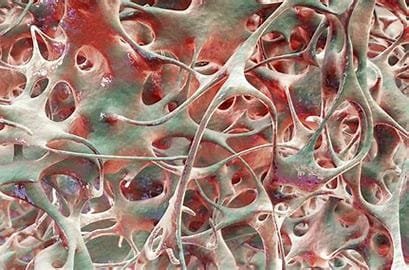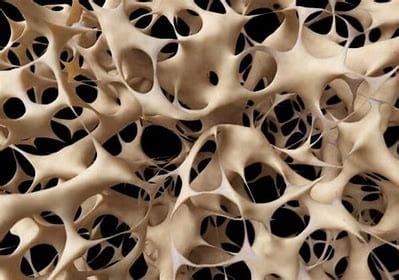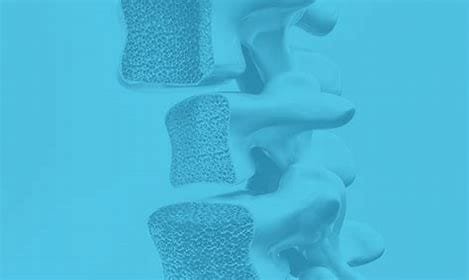Introduction

Osteoporosis is a chronic, typically silent disease that gradually undermines bones, making them weak and prone to fractures. Though it can affect almost any age group, osteoporosis is most prevalent in postmenopausal women and older adults. The World Health Organization reports that osteoporosis affects over 200 million people globally, with millions more being at risk due to lifestyle, genetic, and environmental factors. Let’s explore what osteoporosis is, its causes and risk factors, and how it can be managed and prevented to improve quality of life.
What is osteoporosis?
Osteoporosis is derived from the Greek words for “porous bones.” It’s a condition where bones lose their density and structural integrity. Bone is living tissue that constantly undergoes renewal and repair. Normally, bone density peaks in the 20s and 30s. However, the rate of bone resorption outpaces that of bone formation as people age, thus resulting in a net loss of bone mass. In osteoporosis, the loss is exaggerated, with the bones becoming brittle and susceptible to fractures from minor stresses.
Causes and Mechanisms of Osteoporosis
Osteoporosis is caused by an impairment in the normal process of bone remodeling. Some mechanisms involved include:
Hormonal Changes: The amount of estrogen plays an essential role in building the bones. In females, it decreases drastically at menopause, and the loss rate of bone increases rapidly. The same occurs for males, but at a more sluggish rate.
Calcium and Vitamin D Deficiency: Calcium and vitamin D are essential for healthy, robust bones. If its deficiency occurs, then both bones become weak and, simultaneously, prone to a disease named osteoporosis.
Lifestyle Factors: Physical inactivity or excessive intake of alcohol, smoking, and poor nutrition.
Genetics: A family history of osteoporosis raises the risk. There are a few genetic factors affecting density and, therefore, predisposing to osteoporosis.
Risk Factors
Osteoporosis has several risk factors: some are modifiable, and others are not. These include:
Age: As bones naturally lose density with age, the risk of osteoporosis is greater.
Gender: Women have a higher risk, especially post-menopausal women, due to decreased estrogen levels.
Family History: A history of osteoporosis or fractures within the family may be predictive.
Body Frame Size: Those who are smaller or thinner are at a more significant risk because they would have less bone to begin with.
Dietary Practices: Low intake of calcium and vitamin D will generally weaken bones over time. Too much caffeine or salt also leaches calcium away from bones.
Lifestyle Factors: Smoking, excessive alcohol consumption, and physical inactivity are contributing factors to poor bone health.
Medical Conditions and Medicines: Chronic conditions like rheumatoid arthritis, thyroid disorders, and certain medications (such as corticosteroids) contribute to accelerated bone loss.
Symptoms of Osteoporosis
One of the challenges in the diagnosis of osteoporosis is that there are no noticeable symptoms until the time of a fracture. It is often called a “silent” disease since bone loss occurs gradually and symptomatically. Some common symptoms include:
Fractures from Minimal Impact: Fractures in the hip, spine, or wrist often signal osteoporosis. A fall or even a minor injury can lead to fractures.
Back pain: caused by fractures or compression in the vertebrae.
Loss of Height: Ultimately, it ends up with a loss of noticeable height due to compression vertebral fractures.
Kyphosis: As the bone of the spine continues to break up progressively, this could pose a hunched and bowed posture.
Diagnosis of Osteoporosis
The most common investigation done in the diagnosis of osteoporosis is a bone density scan that is referred to as DXA. DXA tests give a T-score showing how much a bone density measured is away from an age-matched adult having healthy bones. It therefore explains the health status of one’s bones. Any value greater than -1.0 is considered within normal bounds; values from -1.0 up to and including -2.5 indicate low bone mass, termed osteopenia; and any value that comes at or below -2.5 indicates a disease referred to as osteoporosis.
Treatment for Osteoporosis

Prevent fractures and strengthen bones—such are the goals of the treatment of osteoporosis. A treatment plan may involve the following:
Medications: Osteoporosis medications are prescribed to prevent bone loss and encourage new bone formation. Common osteoporosis treatments include bisphosphonates, hormone therapy, and bone-building drugs like teriparatide.
Calcium and Vitamin D Supplements: Adequate calcium and vitamin D intake is very important. Adults need to take about 1,000-1,200 mg of calcium per day and 600-800 IU of vitamin D daily, depending on age and risk factors.
Lifestyle Changes: Regular weight-bearing exercises, such as walking, jogging, and strength training, stimulate bone growth and help maintain bone density. Smoking should be avoided and alcohol consumption minimized.
Fall Prevention: Risk reduction in the geriatric population prevents falls, hence fracture. Simple measures that may be used in the prevention of falls are installation of handrails, elimination of tripping hazards, and better lighting.
Prevention of Osteoporosis
Prevention of osteoporosis can only be done through preventive bone care. A lifestyle and dietary modification at a very early age may drastically reduce the onset of osteoporosis at a much later stage in life. The preventative measures include:
Regular Exercise: Weightbearing and resistance exercises strengthen your bones and improve your muscle balance, reducing your risk of falling.
Healthy Diet: A diet rich in calcium and vitamin D supports a healthy bone. Good sources for calcium are dairy products and leafy greens, including nuts and fortified foods; sources of vitamin D, sunlight, and fatty fish will also do the trick.
Avoid Smoking and Alcohol: Smoking dissolves bone and reduces blood flow into the bone tissue. A high level of alcohol ingestion can impair the body from absorbing calcium.
Regular Health Test: Early scans of the bone density, especially those at risk, can pick up on osteoporosis before fractures take place so that ample time is set for interventions.
Living with Osteoporosis
Osteoporosis can lead to a great deal of loss in quality of life, but the diagnosed patient can do much to control it and reduce risks. Consistent use of prescribed medication, a nutrient-rich diet, and activity can help maintain mobility and independence. Social support and mental health care are also important because living with a chronic condition often leads to feelings of isolation or anxiety.
Conclusion

Osteoporosis is the most common, yet undermanaged, condition with huge implications for health. Knowing its risk factors, symptoms, and treatment options helps people maintain their bone health as well as prevent fractures from occurring. Lifestyle modification, preventive care, and osteoporosis medical management together result in an effective management plan that will help keep a person diagnosed with osteoporosis living healthy and active. Early diagnosis and treatment coupled with bone health commitment is one of the steps in battling this silent killer towards quality life.



